As part of a project on trilateral U.S.-South Korea-Japan relations on economic security, the Center for Asia Policy Studies at Brookings hosted a workshop with experts from these three countries on April 25, 2024. The session focused on trilateral cooperation on industrial policies and advanced manufacturing. Mireya Solís, Director of the Center for Asia Policy Studies at Brookings, followed up with a written conversation with Mathieu Duchâtel, Director of International Studies, Institut Montaigne, Paris.
Mireya Solís: What are the key drivers of the revival of industrial policy in East Asia, particularly Japan?
Mathieu Duchâtel: To quote Japan’s Ministry of Economy, Trade and Industry (METI), Japan’s support for its semiconductor sector is a “national project” designed to “ensure Japan remains strategically essential and strategically independent amid the conflict for technological hegemony between the United States and China.” This initiative involves investing 0.71% of Japan’s gross domestic product (GDP) (25.7 billion U.S. dollars or 3.9 trillion Japanese yen) between 2022 and 2025, a proportion significantly higher than that of other industrial countries supporting their semiconductor sectors with state subsidies (Germany is at 0.41% of GDP, the United States is at 0.21%, and France is at 0.2%).
At the opening ceremony of Taiwan Semiconductor Manufacturing Company (TSMC)’s first chip production plant in Kumamoto last February, its former chief executive officer Morris Chang remarked that the new factory would, “I believe, I hope, start a renaissance of semiconductors.” Japan’s global market share has plummeted from nearly 50% in the late 1980s to around 10% in recent years. Once dominant in the sector, Japan experienced a decline following the 1986 US-Japan semiconductor agreement and the 100% tariffs imposed by the Reagan administration on Japanese memory chips. In this context, the term “renaissance” aptly describes the Japanese government’s ambitions. The revival of Japan’s semiconductor industry is driven by both defensive and offensive strategies.
Defensively, Japan’s semiconductor policy is embedded in a broader vision of economic security. Like other industrial powers, Japan was affected by COVID-19-related supply chain disruptions. However, a sense of vulnerability and a history of crises caused by natural disasters had led companies, notably Toyota, to adjust their semiconductor supply chain management systems through multi-sourcing, greater information sharing with suppliers, and increased inventory. At the national level, industrial policy is a response to Japan’s external security concerns. In fact, METI initiated talks to invite TSMC to invest in Japan in 2019—before the pandemic. The risk of conflict in East Asia and the potential for weaponizing interdependencies through export denials and other coercive measures have made domestic semiconductor production a matter of national security for the state, and a business opportunity for companies.
Japan’s quest to become strategically indispensable in the semiconductor sector rests on solid foundations. Japanese companies dominate several segments of semiconductor equipment and materials. For example, Japan holds an 88% global market share for coater/developers (Tokyo Electron, Screen Holdings), 53% for silicon wafers (Shin-Etsu Chemical, Sumco), and 50% for photoresists (Shin-Etsu, JSR, Tokyo Ohka Kogyo).
However, without government intervention, the numerous projects currently underway in Japan would likely not have materialized. Major initiatives include TSMC in Kyushu, Rapidus in Hokkaido, Micron in Hiroshima, Kioxia/Western Digital near Nagoya, and Sony’s sensor plants in Kyushu. Together, they are spurring renewed investment in equipment and materials. In Kyushu alone, Sumco, Ebara, Tokyo Electron, and Tokyo Ohka Kogyo have announced new plants between 2021 and 2023. In Gunma prefecture, Shin-Etsu has announced its first new plant in 56 years.
Offensively, there are significant opportunities for Japan in certain segments of the semiconductor industry. For instance, in optical sensors, Sony aims to maintain its lead over Samsung through a technological alliance with TSMC. The Rapidus project in Hokkaido aligns with Japan’s ambition to be a key player in high-performance computing.
Mireya Solís: Industrial policy has a checkered record with many past instances of government support failing. What are the ingredients for successful industrial policy in a world of global supply chains, fast technological innovation, and strategic competition with China?
Mathieu Duchâtel: It is still too early to determine whether Japan’s semiconductor industrial policy will succeed. Japan’s industrial policy for semiconductors relies on diversifying strategic risk, unlocking private investment, and leveraging strong technological partnerships. The strategy could see partial success, as Japan appears to be hedging its bets. Professor Osanai Atsushi from Waseda University observes that METI is backing both a high-risk, high-return project—Rapidus—and a low-risk, low-return project—Japan Advanced Semiconductor Manufacturing (JASM)/TSMC Kumamoto.
However, JASM, the most advanced project so far, seems to be on an excellent track and offers two early lessons.
First, industrial policy is unlikely to be effective if it does not unlock private investment. According to Taiwanese sources (Business Weekly), TSMC has already attracted additional investment from 44 companies in Kumamoto. Japanese officials optimistically estimate that this represents only 10% of what’s to come. The appeal of TSMC’s project has sparked concerns among Japanese companies that TSMC might overly depend on its network of Taiwanese suppliers. To address these concerns, at the plant’s opening ceremony the JASM president stated a goal of reaching 60% local procurement.
Second, industrial policy would be futile without a compelling technological rationale to justify the investment. Japanese state aid alone does not fully explain TSMC’s decision to invest in Kumamoto. Throughout its negotiations with METI, TSMC consistently emphasized the importance of involving Sony in the project. The business case for the TSMC-Sony co-development of next-generation CMOS image sensors is robust, driven by their shared interest in competing with Samsung in this sector. Additionally, having a local private sector ally is crucial for navigating government affairs. Taiwanese sources joke that TSMC received Sony’s support at every stage of the Kumamoto project, while in the United States, TSMC faces resistance from Intel “at every turn.”
Mireya Solís: Are the industrial policies of Japan and other like-minded countries effective in competing with China’s ambitions to lead in the technological frontier and indigenize advanced manufacturing?
Mathieu Duchâtel: There are two developments to watch closely.
First, there is Rapidus, described as an “advanced logic chip start-up” by its chairman, Atsushi Koike. Rapidus’s success will be gauged by its commercial sales, but from a national security perspective, it represents Japan’s effort to achieve technological superiority over China. By leapfrogging Fin Field Effect Transistor (FinFET) technology to produce 2 nanometer (nm) and below using Gate-All-Around (GAA) architecture, Rapidus aims to become a global leader in high-performance computing and artificial intelligence (AI) chips. This advancement would significantly widen the technology gap with China, which faces bottlenecks in GAA architecture due to the 2022 export control restrictions imposed by the Biden administration and its exclusion from the innovation cycle. For Japan, this has important military implications as well. According to the US Department of Commerce, “GAAFET technologies enable faster, energy-efficient, and more radiation-tolerant integrated circuits that can advance many commercial as well as military applications including defense and communications satellites.”
Japan’s primary objective with Rapidus is risk mitigation. The project aligns with Japan’s 2022 National Security Strategy, which emphasizes building a national infrastructure for designing and manufacturing next-generation semiconductors. Beyond this defensive stance, Rapidus aims to position Japan strategically for the next wave of manufacturing innovation in high-performance computing, enabled by GAAFET technology and the leap to 2 nm and beyond. Currently, GAA technology is used by TSMC and Samsung in their 3 nm and 2 nm chip manufacturing processes, with Intel planning to introduce GAA transistors around 2025. Japanese semiconductor companies missed the FinFET revolution in the 2010s, despite Hitachi’s early research and development (R&D) leadership. The Japanese government believes that without an industrial infrastructure for advanced semiconductors, the country will fall behind in generative AI and quantum computing.
Second, there is advanced packaging, a highly innovative business segment in which China has big ambitions, especially since it is not yet subject to strong restrictions on technology transfers. Besides Sony, TSMC is collaborating with other Japanese suppliers to further develop CoWoS, chip-on-wafer, and wafer-on-substrate technologies. These 3D packaging technologies integrate high-bandwidth memory and system-on-chip (SoC) and are crucial for TSMC’s Huida AI chips. Unlike Rapidus, which is somewhat state-led, TSMC’s advanced packaging plans are driven by market forces and relies on the products of some key Japanese suppliers. For example, according to a METI representative, without Ibiden, a materials company that provides integrated circuit (IC) package substrates for CoWoS, “it would have been impossible to attract TSMC to Japan.” Another Japanese contributor to TSMC’s plans is Ajinomoto, known primarily as a condiment manufacturer, whose market value has more than tripled due to its production of Ajinomoto Build-Up Film (ABF) resin, a key material used in TSMC’s Huida AI chip packaging process.
Mireya Solís: Industrial policy is a relatively new area for trilateral cooperation. How can Japan, South Korea, and the United States avoid a subsidy war? What are the more promising areas for cooperation?
Mathieu Duchâtel: Japan’s example highlights the critical interplay between market forces, technology alliances, and state subsidies. Semiconductor industrial cooperation between the United States, Japan, and South Korea will largely be driven by the private sector, and business competition will undercut and sometimes outweigh policy coordination efforts. In addition, at this stage, many government decisions regarding state aid for the coming years have already been made without triggering a subsidy war.
While a unified technology transfer control agenda between Japan, South Korea, and the United States is clearly needed, coordinating industrial policies will be more challenging. As semiconductor supply chain resilience has been identified as an area of trilateral cooperation, one potential approach is to focus on projects related to the semiconductor supply chain within the arms industry, given the significant role played by the state in defense applications. Further R&D and industrial cooperation in the area of missile defense, as the three countries have activated a real-time North Korea missile warning data-sharing mechanism, could intersect at some point with semiconductor industrial cooperation.


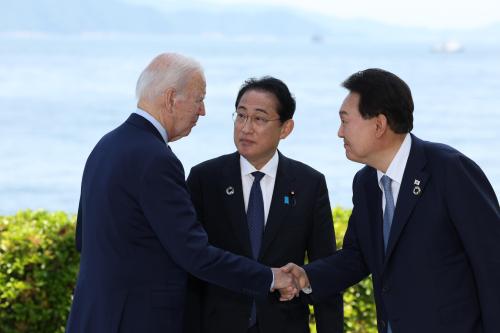
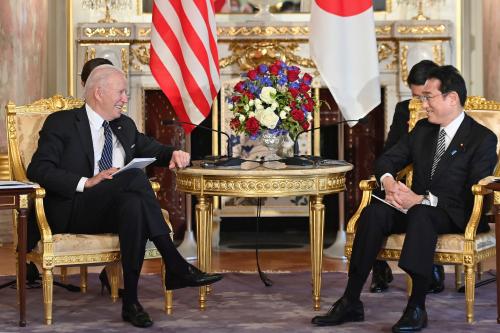
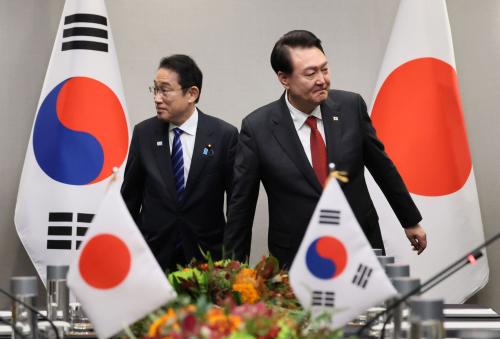
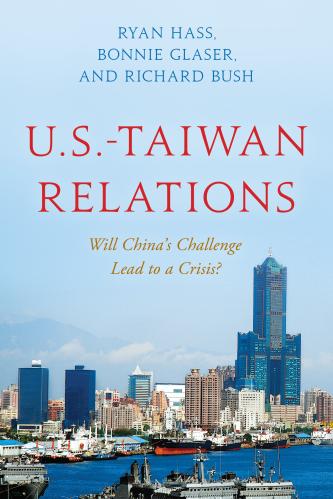
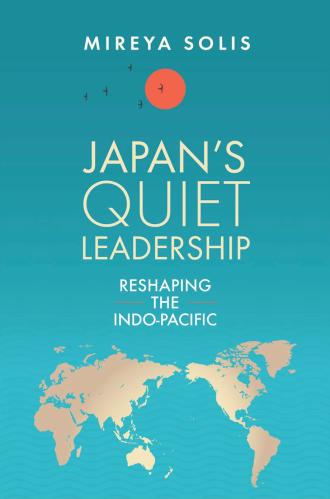
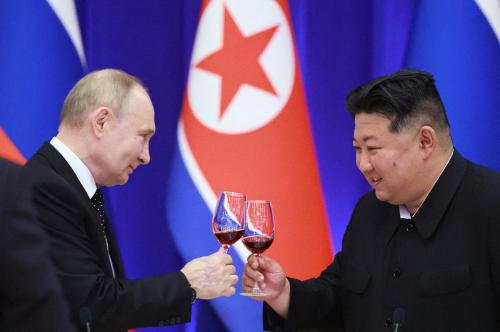

Commentary
The renaissance of the Japanese semiconductor industry
June 3, 2024